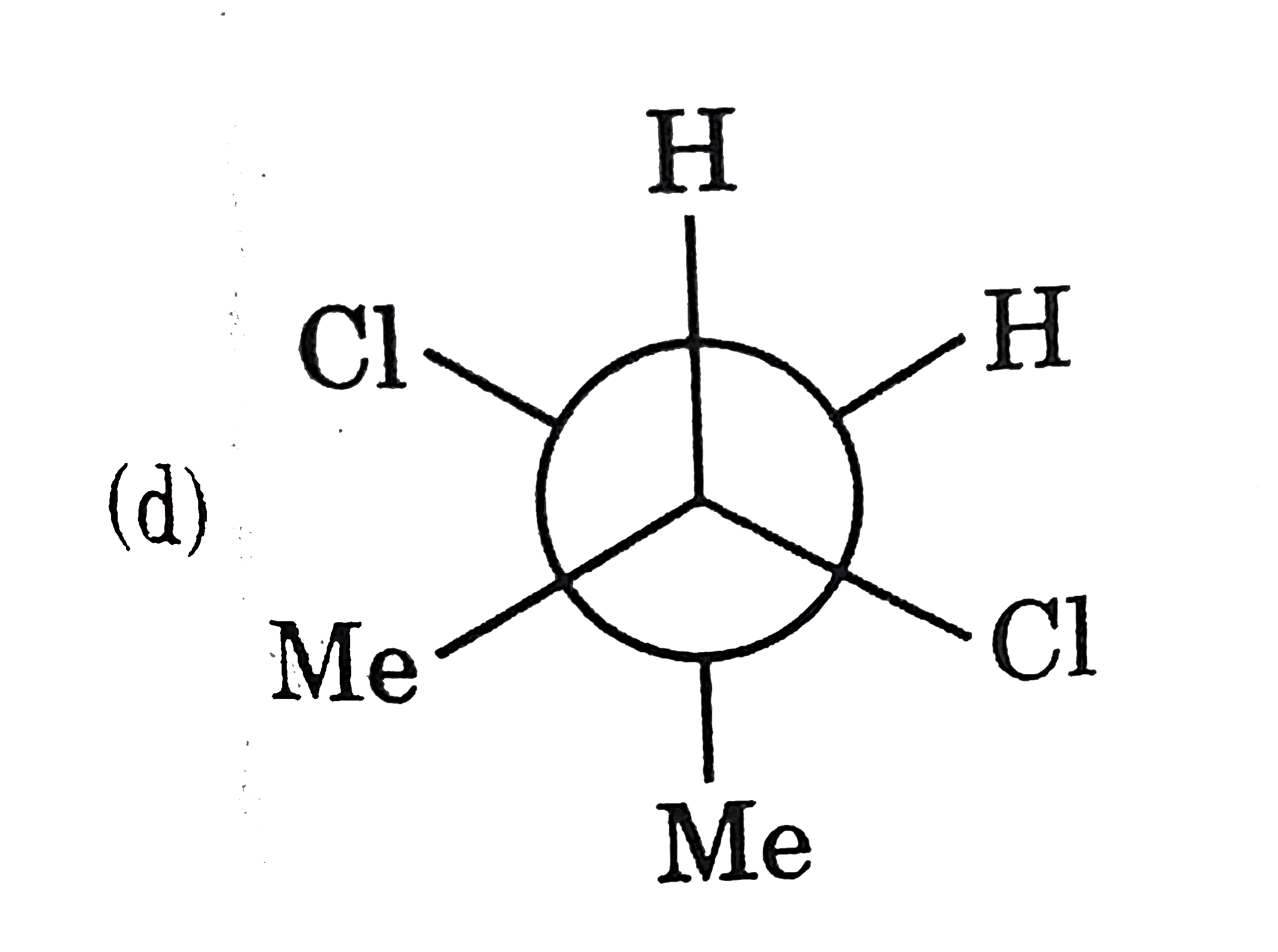Which of the following will not sjow optical isomerism as well as geomertrical isomerism ?




The correct Answer is:D
To determine which of the following compounds will not show optical isomerism as well as geometrical isomerism, we need to analyze the structural features of each compound based on the definitions of optical and geometrical isomerism.
1. Understanding Optical Isomerism:
- Optical isomerism occurs when a molecule has a chiral center, which is typically a carbon atom bonded to four different groups. If a molecule has a plane of symmetry, it cannot be chiral and thus cannot exhibit optical isomerism.
2. Understanding Geometrical Isomerism:
- Geometrical isomerism (cis-trans isomerism) occurs in compounds with restricted rotation around a double bond or a ring structure. For geometrical isomerism to occur, the groups attached to the double bond must be different. If the groups are the same on either side of the double bond, the compound will have a plane of symmetry and will not show geometrical isomerism.
3. Analyzing the Given Options:
- For each option provided, we need to check for the presence of a chiral center and the presence of a plane of symmetry.
- If a compound has a plane of symmetry, it will not show optical isomerism.
- If a compound has identical groups on either side of a double bond, it will not show geometrical isomerism.
4. Identifying the Compound:
- After analyzing each option, we look for the compound that has both a plane of symmetry and identical groups around a double bond or lacks a chiral center.
- The compound that meets these criteria will be the one that does not show either optical or geometrical isomerism.
5. Conclusion:
- The final answer will be the compound that has been identified as having a plane of symmetry and/or identical groups around a double bond, indicating that it does not exhibit optical or geometrical isomerism.
- Optical isomerism occurs when a molecule has a chiral center, which is typically a carbon atom bonded to four different groups. If a molecule has a plane of symmetry, it cannot be chiral and thus cannot exhibit optical isomerism.
- Geometrical isomerism (cis-trans isomerism) occurs in compounds with restricted rotation around a double bond or a ring structure. For geometrical isomerism to occur, the groups attached to the double bond must be different. If the groups are the same on either side of the double bond, the compound will have a plane of symmetry and will not show geometrical isomerism.
- For each option provided, we need to check for the presence of a chiral center and the presence of a plane of symmetry.
- If a compound has a plane of symmetry, it will not show optical isomerism.
- If a compound has identical groups on either side of a double bond, it will not show geometrical isomerism.
- After analyzing each option, we look for the compound that has both a plane of symmetry and identical groups around a double bond or lacks a chiral center.
- The compound that meets these criteria will be the one that does not show either optical or geometrical isomerism.
- The final answer will be the compound that has been identified as having a plane of symmetry and/or identical groups around a double bond, indicating that it does not exhibit optical or geometrical isomerism.
Topper's Solved these Questions
- ISOMERISMBook:HIMANSHU PANDEYChapter:ISOMERISMExercise:Level 2 (Q.1 To Q.25)
Explore 25 Videos
- ISOMERISMBook:HIMANSHU PANDEYChapter:ISOMERISMExercise:Level 2 (Q.26 To Q.50)
Explore 25 Videos
- ISOMERISMBook:HIMANSHU PANDEYChapter:ISOMERISMExercise:Subjective Type Problems
Explore 11 Videos
- HALIDESBook:HIMANSHU PANDEYChapter:HALIDESExercise:Subjective Type Problems
Explore 10 Videos
- NOMENCLATUREBook:HIMANSHU PANDEYChapter:NOMENCLATUREExercise:Section Iv (Q.26 To Q.26)
Explore 1 Video
Similar Questions
Knowledge Check
Which of the following will not show optical isomerism ?
ACl-CH=C=C=CH-ClBCl-CH=C=C=C=CH-ClC D
D
Which of the following will not show optical isomerism.
AC1−CH=C=C=CH−C1BC1−CH=C=C=C=CH−C1C D
D
Which of the following will not show optical isomerism ?
ACl−CH=C=CH−ClBBr−CH=C=CH−BrC D
D
Which of the following will show optical isomerism? .
View SolutionWhich of the following will show optical isomerism?
View SolutionWhich of the following will show optical isomerism?
View SolutionWhich of the following does not show optical isomerism ?
View SolutionWhich of the following does not show optical isomerism?
View Solution

